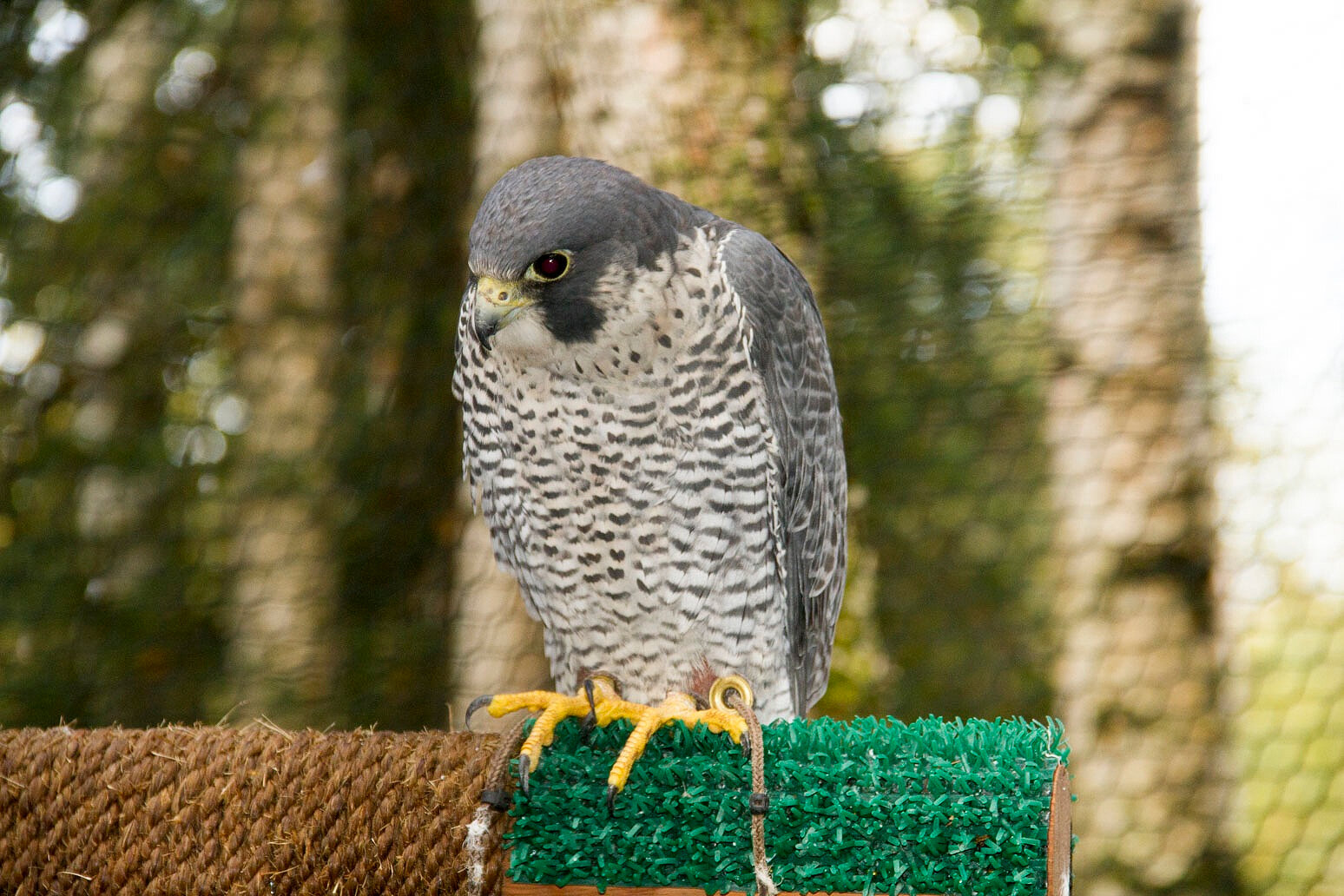Peregrine Falcon
peale's peregrine falcon
Falco peregrinus pealei
LIFE SPAN: 13 to 20 years in wild, up to 25 years under human managed care.
RANGE: The peregrine falcon is one of the most widespread birds in the world. It is found worldwide, except for rain forests and cold, dry Arctic regions. These falcons prefer open habitats like grasslands, tundra and meadows and they nest on cliff faces and crevices.
SIZE: Roughly crow-sized, about 15 to 21 inches long with a wingspan of about 40 inches.
PHYSICAL FEATURES: Peale’s peregrine falcons are the largest peregrine falcon subspecies in the world. Adults have slate blue-gray wings, backs barred with black, pale undersides, white faces with a black stripe on each cheek, and large, dark eyes. Young peregrine falcons are darker and more brown.
FOOD: Peregrine falcons feed mostly on other birds (songbirds, shorebirds, ducks, starling and pigeons), but they will also eat small mammals and reptiles.
BEHAVIOR: These falcons are known for their spectacular dives, called stoops, used for capturing their prey. During stoops, these falcons can reach speeds over 200 miles per hour, making it the fastest bird in the world.
Peregrines reach breeding maturity at about 2 years of age. The male’s aerial acrobatic displays attract their mate at the nesting site. An average of 4 eggs are laid in the spring and hatch after about a month. Peregrine falcons vigorously defend their nests.
CONSERVATION: Peregrine falcons in the United States were nearly extirpated by the use of the pesticide DDT about 60 years ago and were placed on the endangered species list in 1970. The nationwide ban of DDT in 1973, along with a reintroduction effort, resulted in a very successful recovery for peregrine falcons and in 1999 the falcon was removed from the list. Populations have continued to slowly increase since that time. Still protected by the Migratory Bird Treaty Act. Illegal to harm or possess any part, including feathers (unless permitted by USFWS).

